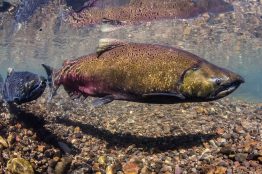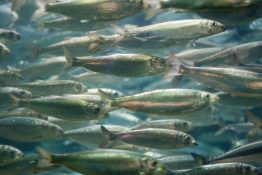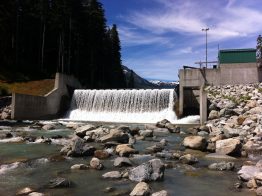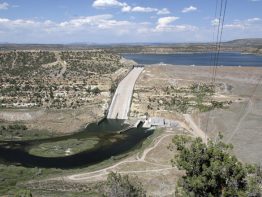The largest and oldest Chinook salmon — fish also known as “kings” and prized for their exceptional size — have mostly disappeared along the West Coast. That’s the main finding of a new University of Washington-led study published Feb. 27 in the journal Fish and Fisheries. The researchers analyzed nearly 40 years of data from hatchery and wild Chinook populations from California to Alaska, looking broadly at patterns that emerged over the course of four decades and across thousands of miles of coastline.
Read more at UW Today »Aquatic and Fishery Sciences' Chelsea Wood awarded Sloan Fellowship
Chelsea Wood, an assistant professor of aquatic and fishery sciences, is among five faculty members across the University of Washington that have been awarded early-career fellowships from the Alfred P. Sloan Foundation. Announced on Feb. 15, Sloan Fellowships are open to scholars in eight scientific and technical fields — chemistry, computer science, economics, mathematics, molecular biology, neuroscience, ocean sciences and physics — and honor those early-career researchers whose achievements mark them as the next generation of scientific leaders.
Read more at UW Today »Simple rules can help fishery managers cope with ecological complexity
To successfully manage fisheries, factors in the environment that affect fish — like food sources, predators and habitat — should be considered as part of a holistic management plan. That approach is gaining traction in fisheries management, but there has been no broad-scale evaluation of whether considering these ecosystem factors makes any economic sense for the commercial fishing industry. A team of ecologists and economists has addressed that question in the first study to test whether real-life ecological interactions produce economic benefits for the fishing industry.
Read more at UW Today »Small hydroelectric dams increase globally with little research, regulations
Hydropower dams may conjure images of the massive Grand Coulee Dam in Washington state or the Three Gorges Dam in Hubei, China. But not all dams are the stuff of documentaries. Tens of thousands of smaller hydroelectric dams exist around the world, and all indications suggest that the number could substantially increase in the future. These structures are small enough to avoid the numerous regulations large dams face and are built more quickly and in much higher densities.
Read more at UW Today »Fish to benefit if large dams adopt new operating approach
Thousands of dams built along U.S. rivers and streams over the last century now provide electricity for homes, store water for agriculture and support recreation for people. But they also have downstream impacts: They reduce the amount and change the timing of flowing water that fish rely on for spawning, feeding and migration. Recognizing that many large dams are here to stay, a UW team is investigating an emerging solution to help achieve freshwater conservation goals by re-envisioning the ways in which water is released by dams.
Read more at UW Today »





